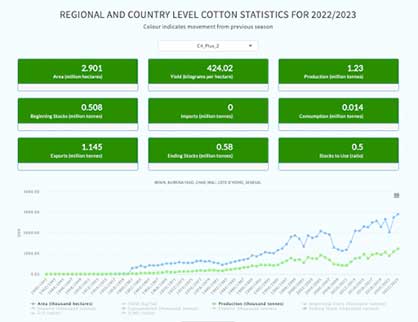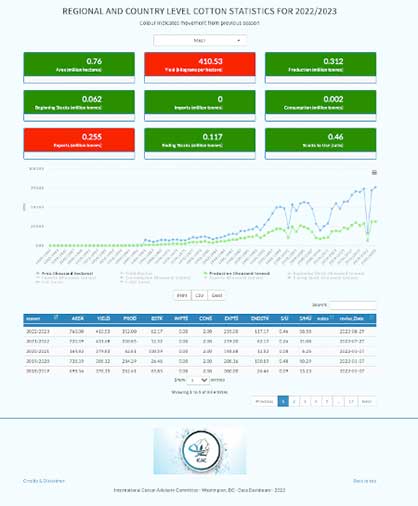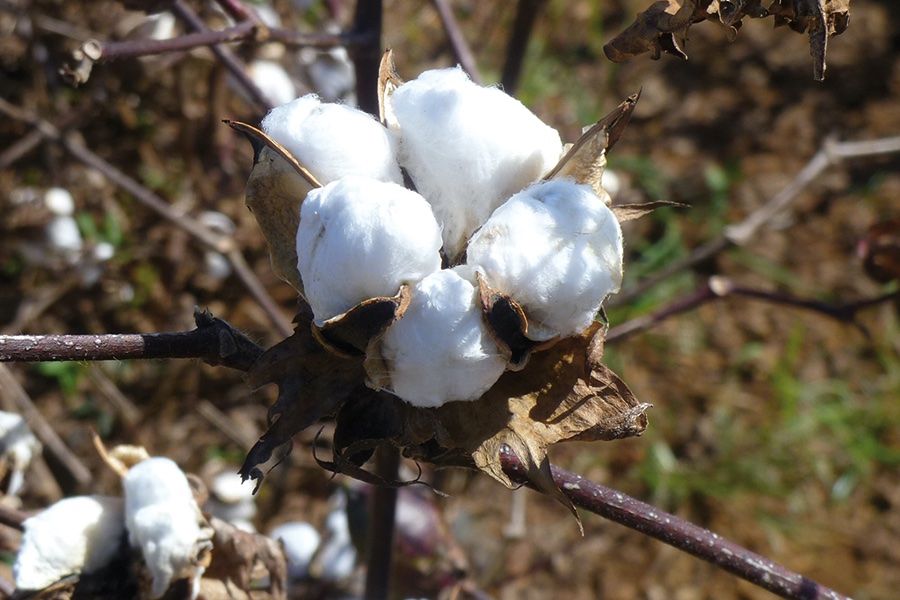#Raw Materials
The new ICAC Data Portal: The difference between text and context
1. Putting basic, yet still very robust, data storytelling capabilities into the hands of the global cotton and textile community. All users who visit the Data Portal will be able to view the global, regional and national cotton balance sheet form 1940 to present. In fact, the Data Portal is connected, in real-time, to ICAC databases, so when we make updates to the data they will be instantly reflected in the Data Portal. This makes the ICAC the premier resource for real-time information on global, regional and national statistics. In addition to viewing the data, users will be able to download the data to their local machine. The Data Portal also contains information on cotton lint (HS 5201) imports and exports. In the ’Tools’ section of the Data Portal, users can view a Cotton Season Calendar to get a sense of who is planting and/or harvesting cotton around the globe at any given time throughout the year. Under the ’Tools’ tab, users will able be able to convert cotton bales to metric tonnes, which is useful because different countries have different bale sizes. And finally, there is a tab that allows users to compare the ICAC’s cotton balance sheet to the USDA’s cotton balance sheet — a useful exercise to get two different perspectives on the global cotton situation.
2. Adding significant new value to ICAC Member governments. Some of the most powerful functionality found in the Data Portal is reserved for use by ICAC Members only. It’s one of several steps the organisation has taken over the last five years to provide even greater value for Members; others include the development of the Four Simple Steps to Sustainable High Yields programme, Virtual Reality Cotton Training and the voice-based Soil and Cotton Plant Health app that was created to help illiterate small holder farmers.
As an example of the Data Portal’s capabilities, let’s assume a user wants to view regional statistics about the C4+2 cotton-producing countries in Africa (Benin, Burkina Faso, Chad, Mali, Cote D'Ivoire, Senegal). A quick glance at the image below reveals that this region is doing well in the 2022/23 season, as all major variables are green (thus indicating an increase from the previous season). In fact, if these numbers hold, the C4+2 countries are on pace for the largest production in their history.

However, when we look at the graph view of the data at the bottom of the image, we notice an anomaly in the 2020/21 season. Using the dashboard, we can perform a small amount of investigative work and drill down into each of the C4+2 countries to have a closer look. We would find that Mail had a particular tragic 2020/21 crop year, and that is the reason for the depressed numbers in the C4+2 during that time period.

This simple example illustrates the ability to view data at the regional level. Users can drill down into the data at the country level and instantly have a plot available to quickly understand the trends in the data. They also can download the data in Excel (csv) format so they can further manipulate it depending on the specific use case.
‘The dashboard that is being showcased today is the foundation upon which the ICAC will build’, Mr Looney said. ‘In time, we will migrate our publications into interactive and dynamic reports, giving users the ability to dig deeper into the data to help understand the analysis. This is a massive change from the way the ICAC had been operating the statistics programme. With formal databases, interactive dashboards and dynamic reports, we are excited to provide the same excellent analysis using the most advanced data science technology’.
‘Not only has this Data Portal ensured that the ICAC is now at the cutting edge of data provision, it also has an added advantage of allowing ICAC Members to interact directly with the data we hold’, said ICAC Executive Director Kai Hughes. ‘It really is a fantastic achievement and developed in-house by Data Scientist Matthew Looney in just a few months’.
To try out the new ICAC Data Portal, please click:
https://tinyurl.com/mvp7yfpb.










canva-900-1.jpg)






